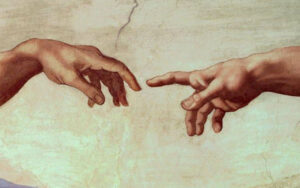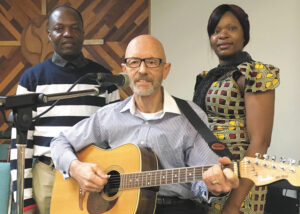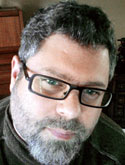Despite gaping holes in the biblical basis for its elaborate hierarchy, and despite relatively widespread pedophilia among its priests, the Roman Catholic Church holds on to roughly twice as many official adherents—1.2 billion—as all Protestant denominations put together.
Despite outlandish contradictions—the Vatican puts Mary on a pedestal while excluding women from leadership, and it condemns homosexuality although insiders say many monks and priests are gay—and despite a litany of unfashionable views—opposition to contraception and obsession with celibacy to, name but two—Catholicism shows no signs of global decline.
And despite the absurdity of an old boys club shrouding itself in Old World opulence to decide who among them will reign over the “sacred hierarchy,” papal conclaves have become religion’s World Cup, attracting media attention that would make presidents and soccer stars jealous.
Sure, Catholicism is shrinking in the Global North, but with gains in the Global South it continues to claim about 17 percent of the world’s population, just like it has since at least the 1970s.
How does Catholicism do it? How does it weather its failures, contradictions and backwardness? How does it not crumble under the weight of its pomposity? What does its resilience say about humanity, religion and God?
Anabaptist admiration
The contrasts of Catholicism have a starkly personal dimension for me. Although my Mennonite ancestors were burned at the stake by Catholics, my aboriginal friends were violated by them at residential schools, and I can’t imagine Jesus of Nazareth strolling through the Vatican without picking up the first whip in sight, I owe Catholicism a great debt. By some holy irony, many of the most loving, grounded people I have met are Catholic monks, nuns and priests. I read more Catholic writers than Mennonite. I take my deepest questions to a Catholic mentor more often than to a Mennonite.
All I knew about Catholics growing up were the predictable Mennonite suspicions about Mary-worship, papal infallibility, prayers for the dead and prayers to saints, and all the motions those papists go through.
But in my early 20s, I found my way—I don’t recall just how—to the writings of Henry Nouwen and Thomas Merton, two prominent Catholics. They wrote about silence, darkness, stillness, the interior life and intimate connection to God, although of a different sort than the evangelical striving I had also encountered. I felt drawn by something I had not found in my own tradition. Visits to monasteries and retreat centres followed. Along the way, I discovered the work of Jean Vanier, Caryll Houselander, Oscar Romero, Carlo Carretto and other Catholic writers, who all changed my life.
Such is my appreciation for Catholicism that I marked my 40th birthday last winter by spending a few days at the Trappist monastery near Holland, Man., a place of tranquility and hospitality.
But the blessings are jumbled up with all manner of other things. For instance, when those Trappists, like all Catholics, come to the heart of their religious practice, the eucharist, I become a second class Christian. I am not baptized in the Catholic Church, so I do not qualify to partake of the body of Christ.
I find that stricture petty. But I manage to stomach it, barely. After all, as popular wisdom would have it, in this life you have to take the good with the bad.
Catholics, it seems, are masters at just that. They are able to take an astounding amount of bad mixed in with their blessings. At the risk of pointing out a log in someone else’s ecclesiastical eye, let me take a closer look at what Catholics are able to withstand.
Crimes of ordination
I’ll skip the Crusades, Inquisition and initial wave of colonialism, the latter of which is an ironic contributor the church’s current size, and jump to Canada’s Indian Residential Schools. For decades, Catholic leaders, who operated about 60 percent of the residential schools in Canada, willingly removed tens of thousands of aboriginal children from their parents and communities. Many of the church’s most devoted and trained members then abused these children physically, emotionally and sexually. Untold numbers died unnecessarily. This happened on a systemic basis over a long period of time.
I heard a Cree counsellor say that survivors sometimes recount the words of abusers who told them: “If you love Jesus, you’ll let me do this.”
How could Christianity, whatever the denomination, go so unimaginably wrong? It’s hard to imagine worse actions.
While Catholic dioceses and orders in Canada have paid a combined $80 million as part of the 2007 government-led residential school settlement, and some of those bodies have issued apologies, the Vatican remained silent until 2009, when His Holiness Pope Benedict XVI expressed “sorrow” over the “deplorable conduct” of “some members of the church.”
Compare his one-paragraph statement—extraordinarily concise for a Vatican document—with the statement by Prime Minister Stephen Harper the year before, in which he said “we are sorry” in five languages on national television from the floor of Parliament.
Compare Rome’s response to serial pedophiles among its clerical ranks with the automatic and immediate excommunication it metes out to women who get abortions, regardless of their circumstances.
Compare Rome’s response to the response at Penn State University, when assistant football coach Jerry Sandusky was arrested on charges of sexually assaulting minors on Nov. 5, 2011. He was fired and banned from the campus the next day. Two days later, the school rejected the resignation of storied head coach Joe Paterno, who concealed information related to the case, and fired him on the spot. The president of the university also resigned that day. Then the governing body for university athletics chopped the school’s football program off at the knees. That was the response to one pedophile at a secular institution.
By worldly reckoning, the residential school atrocities, along with the broader and more recent pedophilia scandal among Catholic priests, should have sunk the whole show. The faithful should have left en masse. The pope should have resigned. At minimum, it should have led to a major revamp of a structure in which celibate men exercise inordinate authority with near impunity. But it didn’t.
Sure, the Catholic Church has lost some credibility, priests and cash over the scandals, but, overall, as a global whole, it has pretty much carried on, picking up new members to replace the ones it loses. I find that remarkable.
Code of Canon Law
Ironically, the criminal indiscretions have happened despite an extravagant structure of church law and judicial authority, much of which is devoted to rooting out anything that might bring public shame to the church. A key component of this “juridical-legislative” structure is the Code of Canon Law.
As I found out, the Code is a stuffy showcase of the elements of Catholicism that, like the scandals, one would think should have toppled the Catholic edifice long ago.
While the papal conclave gripped much of the world’s attention last March, including mine, I found myself online at www.vatican.va, and, as these virtual things go, I soon landed upon the Code of Canon Law. By the time the cardinals had sent their final smoke signal out the roof of the Sistine Chapel a few days later, I had read all 1,752 canons, along with their innumerable sub-canons.
My motives for reading were murky. I wanted to see what should have happened to the people who committed residential school abuses; the last 441 canons deal with trials, sanctions and the like. I also wanted to see where it said I was not worthy to eat their communion wafers (Canon 844), that women can’t be priests (Canon 1024), and why they can’t be priests (nothing). I wanted a further glimpse into the bureaucratic bowels of the church to which many of the finest people I know devote themselves.
Despite mentions of love, grace and “a close relationship with Christ,” what I found in the Code was an unrelenting concern for rules, discipline, jurisdiction, authority, the aversion of “scandal,” and the ordering of power among dozens of church offices, from “apostolic pro-vicars” to men of “cardinalatial dignity” (cardinals), to the “supreme legislator” himself.
Predictably, I also found much about the ordering of sexual life, “pelvic orthodoxy” as critics call it: laws about celibacy, adultery, “the evangelical counsel of chastity,” “the order of virgins” and marital consummation, including the stipulation that only Rome can adjudicate “the fact of the non-consummation of a marriage,” and only the “supreme legislator” himself can get you out of your marriage once his authorities have established said fact (Canon 1698).
It’s hard to see the Code as an improvement on “Love the Lord your God . . . and love your neighbour as yourself.” And, of course, each of their many references to the aversion of scandal is a reminder of their tragic failure to do just that.
Rules are necessary, and all denominations have them, but it’s hard to imagine a reasonable person reading the Catholic Canons without repeatedly thinking something akin to, “You can’t possibly be serious!” But if the Catholic Church is anything, it’s serious.
In an age of individual freedom, equality, informality and change, it sternly holds to a structure in which mostly old white men unabashedly call the shots. And masses of people, including many sharp and sturdy-willed women, willingly submit to Catholic law. Indeed, in many cases, love and wisdom blossom under this system.
Sacred monopoly
As the new pope endeared himself to the world, and to me, mostly by acting unpope-like, the Canons were fresh in my mind, leaving me to wonder how a person as seemingly humble and human as Pope Francis could find his way to the top of the structure laid out in the Canons.
After the pope’s honeymoon with the global press subsided and he settled down to writing encyclicals, I came upon a book by a Pulitzer Prize-winning author who has been a Catholic for nearly 80 years. Published shortly before Pope Benedict’s resignation, Garry Wills’s book Why Priests?: A Failed Tradition examines the biblical and historical bases for the Catholic priesthood.
Despite the title of his book, Wills says he has “nothing against priests,” and, in fact, “tried for a time to be one.” Then he methodically dismantles their biblical and historical undergirding. While he makes a thorough, scholarly argument, some of his most compelling points are also the simplest. Consider the following two:
- There were no priests in the Christian communities of the New Testament. Only Hebrews mentions an individual priest, and that is Jesus, who is said to have no followers in that role. Of the 16 gifts and ministries mentioned in Paul’s writings—prophecy, healing, etc.— priesthood is absent.
- The early church was “radically egalitarian and charismatic, not authoritarian or hierarchical.” Jesus chastised the Sadducees and Pharisees for their elaborate rituals and self-important ways. Wills quotes Jesus’ words about these religious leaders in Matthew 23: “They enlarge their tefillins and lengthen their tassels. They like the most important place at meals, and the chairs of honour in the synagogues . . . and to be called by people ‘Rabbi.’ ” Jesus continues: “Do not address any man on earth as father, since you have only one Father, and he is in heaven.”
“What could be more against this teaching,” Wills asks, “than popes who adopt the title ‘Holy Father?’ ”
Then Wills goes on to test the contortions by which an early church with no priests turned into a later church in which priests are entirely indispensable.
Catholic priests are said to participate in the priesthood of Christ. That is the basis of their authority. But Jesus was not a priest. He was a Jewish lay person. Except in the Letter to the Hebrews.
Since Jesus was not of the Jewish line of priests, the writer of Hebrews creates a new priestly lineage based on an otherwise obscure minor character. Melchizedek appears for three verses in Genesis, where he is identified as a king and priest who blesses Abraham and receives a tithe from him. He appears again, momentarily, in Psalm 110: “You are a priest forever according to the order of Melchizedek.” That’s it.
But the writer of Hebrews takes that line, expands on it and applies it to Jesus. Wills questions not only the writer’s use of Melchizedek, but the whole intent of casting Jesus as a priest, since Jesus never called himself a priest, didn’t do what priests do and often clashed not only with priests but the whole system of religious overlords.
Even if one is not prepared, like Wills, to question the biblical writings, it would be enough to accept his critique of the later Catholic use of Hebrews as a basis for the ongoing priesthood, especially since Hebrews says that Jesus is the last priest, “whose onetime offering makes all other priesthoods obsolete.”
Despite that, Catholicism cannot exist without priests. The church places fundamental significance in the sacraments—baptism, confirmation, penance, ordination, marriage, extreme unction and the eucharist. You can’t be Catholic without them. And most of them can only be administered by priests. In a chapter titled “Priestly imperialism,” which leads off a section entitled “Monopoly on the sacred,” Wills both explains and largely debunks the sacramental system, including the eucharist as we know it, most of which also did not exist in the first-century church.
To reject priesthood is to delegitimize the entire Catholic hierarchy. Wills does not dwell on this obvious point, although he does, with one swift sentence, yank the lush Vatican rug out from beneath the papacy. A pope, who carries the title of Bishop of Rome, derives his authority from the belief that popes are successors of the biblical Peter, whom Catholics consider the first bishop of Rome.
Wills says simply, “[T]here is no historical evidence for Peter being bishop anywhere—least of all at Rome, where the office of bishop did not exist in the first century” after Christ. Then he adds that “the linear ‘apostolic succession’ is a chain of historical fabrications.”
Any good papist
To be fair, and to more fully make my point, I must also mention what I see as the best of the Catholic Church:
- The pope’s church has churned out some fabulous writers and exceptionally fine people. I mean people who are who they are not in spite of the church but because of it. They are Catholic to the core.
- The Catholic Church can claim a universality and global unity that no one can match. You can go into a Catholic church anywhere in the world and find a service that is familiar, even if you don’t understand the language. Every Sunday, millions of Catholics read the same Scripture and go through the same rituals. Compared to the countless Protestant subgroups, factions and splinters, there is one Catholic Church.
- Rules, structure, clear leadership and a geographic centre provide a strong sense of identity and belonging, two things humans need.
- Catholics are much better at ritual, beauty and drama than Protestants. The papal conclave was a masterwork of theatre, with the perfect mix of mystique (the old guys sequestered as if between heaven and earth) and disclosure (a glimpse of the cardinals’ living quarters), along with their get-up worthy of an Oscar for costume design. On a smaller scale, a typical Sunday service includes actions, smells, tastes and sights that engage the senses God gave us.
Ultimately though, none of this explains the resilience of Catholicism. I still don’t get how so many people can stomach it, especially people like Garry Wills.
After an exhaustive argument against the whole Catholic apparatus, Wills settles himself right back into the arms of the church. The book contains no climactic call for priests to burn their vestments, or for ordinary Catholics to serve each other communion or baptize one another.
Instead, he wraps up like this: “I just want to assure my fellow Catholics that, as priests shrink in numbers . . . congregations do not have to feel they have lost all connection to the sacred. . . . [W]e have each other.” Fellowship, scriptural instruction and support can happen without priests.
It’s a meek ending to an unflinchingly bold book. Just when Wills had piqued my frustrated sentiments toward Catholicism, he explains why he doesn’t leave it: “It will hardly advance the desirable union of all believers if I begin by excluding those closest to me.” That’s either a cop-out or a word of grace.
“No believing Christians should be read out of the mystical body of Christ,” he writes, “not even papists. . . . All those acting in the name of Jesus are our brothers and sisters.”
That makes good sense, but the combination of critique and acquiescence flabbergasts me. His concluding words sound wise, but would it not also be wise to call for radical changes, changes that would help avoid not only the theological flimsiness he exposes but also the human atrocities that have resulted?
People who were raped by priests in the name of Jesus need more than a mild call to unity. Or maybe not.
Even more perplexing for me than Wills’ ability to take the good with the bad is the fact that many residential school survivors now participate in the churches that ran the schools they attended.
Religion doesn’t make sense. I cannot possibly make sense of how so much bad and good can co-exist in the Catholic Church. Or in the Mennonite church. Or in myself, for that matter. The best I can do is to tell myself that it is okay to be confounded. Perhaps it is in that exact point of perplexity that religion maintains its foothold in humanity, providing transcendence when it is most needed.
“All believers in God,” Wills says, “set off on broken and blind adventures into mystery.” Seemingly, God honours this, proving every bit as able to tolerate folly and contradiction as any good papist. l












Leave a Reply
You must be logged in to post a comment.